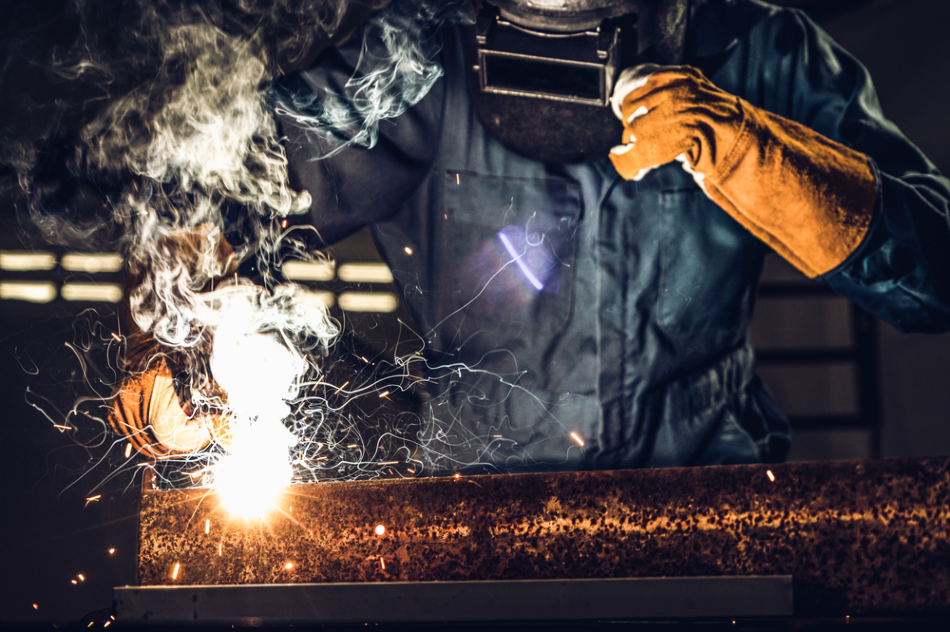Gas metal arc welding (GMAW) is a joining process that requires significant amounts of shielding gas. A robust gas delivery system is necessary even for hobbyists and other small-scale users of MIG welders in order to facilitate their welding process and prevent the joint from reacting with atmospheric gases.

Image Credit: Shutterstock/BluePlanetStudio
If the weld joint becomes contaminated by ambient gases such as nitrogen (N2), the metal may become porous and embrittled, which can ultimately contribute towards mechanical failure.
.jpg)
Image Credit: Environics
This article will discuss the importance of shielding gas delivery systems for welding applications in greater depth.
What is a MIG Welder?
MIG (metal inert gas) welding is the colloquial term for a gas metal arc welding (GMAW) system. To provide material for the weld a thin electrode wire is fed continuously through the torch. The gun then generates a current which arcs between the tip of the electrode and the workpieces. The flow of current through the inherently resistive metal causes the temperatures of both metals to rise above their melting points, forming a weld pool where they mix and fuse together. To blanket this molten joint and protect it from reactants in the atmosphere, shielding gas is continuously released through the nozzle. These gases include common atmospheric gases and water vapor.
Shielding gas delivery systems usually introduce a gas mixture that includes some combination of argon (Ar) with one or two additional species, with the most common for MIG shielding being carbon dioxide (CO2), oxygen (O2), and helium (He). They can be bought in bulk at distinct mixing ratios for the joining of specific metal grades and plates of predefined thicknesses. Premixed gases are generally contained in external pressure containers and are fed into the welding tool via a pressure regulator.
Shielding Gas Delivery Systems: On-Site Blending
Purchasing premixed shield gas is a simple solution for most MIG welding applications, but a dedicated shield gas delivery systems can perform on-site blending for appreciable cost and repeatability benefits.
The Environics Series 3000 Gas Delivery System makes blended gas available on demand. Using its precision thermal mass flow controllers (MFCs) it can mix two or three gas constituents with an accuracy specification of within 1% of setpoint. This guarantees precise shielding gas mixtures that can be configured for specific joinery projects, with a repeatability of 0.05% of the full scale. The Series 3000 is perfectly suited to shops with one or multiple stations being used. The on demand system will provide the desired gas blend without variation in pressure or flow as additional stations are brought online or shut down.
As well as being costly, premixed gases also negatively impact gas conservation. Environics gas delivery systems allow your MIG welding processes to become fully independent, providing total control of your gas composition with absolute confidence in the repeatability of your results.
Gas Delivery Systems from Environics
Environics is an industry leader in the supply of gas blends and delivery systems for industrial applications. Their Series 3000 instrument has been successfully used as a gas mixer in a broad variety of applications including welding, medical research, sensor calibration and testing, and modified atmosphere packaging.

This information has been sourced, reviewed and adapted from materials provided by Environics, Inc.
For more information on this source, please visit Environics, Inc.